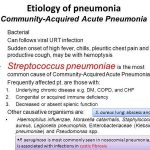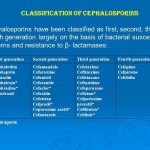
Oxazolidinones are bacteriostatic against staphylococci and enterococci and may be slowly bactericidal against other gram-positive bacteria.

Host defenses such as anatomic, functional, and mechanical barriers serve to protect the intact bronchial tree from invading organisms. Some key factors in the pathophysiology of community-acquired pneumonia are alterations in host defense mechanisms, invasion by virulent microorganisms, and the quantity (i.e., inoculum) of the invading microbes. community-acquired pneumonia is usually acquired by inhalation or aspiration of pulmonary pathogenic organisms into a lung segment or lobe. Much less commonly, community-acquired pneumonia may result from a secondary bacteremia from a distant source — for example, community-acquired pneumonia secondary to Escherichia coli urinary tract infection and/or bacteremia.

The prevalence in the community of bacterial resistance to common antibiotic classes has risen dramatically over the past two to three decades. Pathogens can develop antibiotic resistance through many mechanisms. These mechanisms include production of enzymes that degrade the antibiotic (e.g., β-lactamases), modification of drug targets (e.g., modified penicillin-binding proteins and ribosomes that limit the activity of penicillins and macrolides, respectively), and expression of membrane proteins that pump the antibiotic out of the bacteria.

The upper respiratory tract is colonized by several bacterial species that make up the normal flora. Although these commensal organisms can cause disease in certain situations (e.g., in immunocompromised persons), they generally serve a protective function by limiting the growth of other pathogenic bacteria in the respiratory tract. In the lower respiratory tract (LRT), macrophages that can clear foreign particles reside within the alveoli and serve as the final defense against infection.

Many bacteria have been shown to cause community-acquired pneumonia, but researchers and clinicians identify several bacterial species as the most common causes of the disease. However, epidemiological studies investigating the etiology of the disease show that in the majority of cases, pathogen identification is not readily attainable. Pathogens are classified as typical or atypical based on the spectrum of symptoms associated with them (described in the preceding section). In most studies, five pathogens (discussed in the following sections) have been found to account for approximately 90% of all community-acquired pneumonia.

Despite the large patient populations with respiratory tract infections (RTIs), in recent years, many biopharmaceutical companies have shifted development effort away from RTIs to pursue other disease areas with perceived higher unmet need (e.g., resistant hospital-acquired infections). Likewise, many companies have shifted away from antibacterial drug development in favor of chronic disease markets perceived to have higher return on investment.

Cephalosporins have traditionally been one of the most commonly used antibacterial classes for the treatment of respiratory tract infections. In recent years, drug development within this class has been limited owing to competitiveness, the lack of novel candidates, and high development costs relative to return. Cephalosporins differ widely in their spectrum of activity, susceptibility to β-lactamases produced by bacteria, and serum half-life. Dong-A pharmaceuticals in South Korea is developing DA-7101, indicated for the potential treatment of respiratory and urinary tract infections.